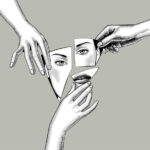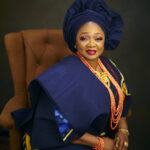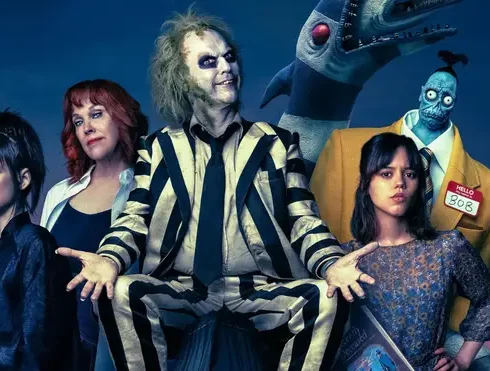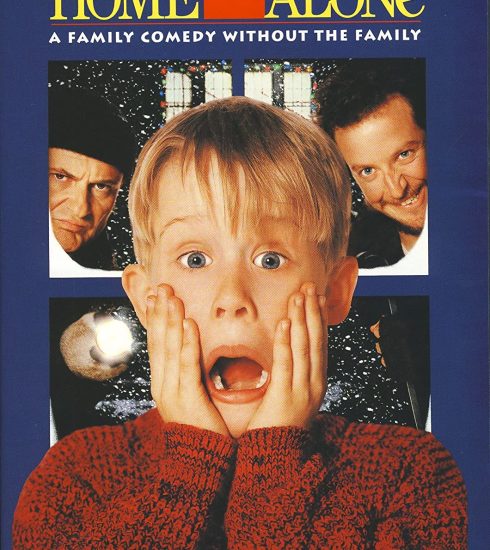Movie review: Snow White
The first feature film produced with cel animation, Walt Disney’s Snow White and the Seven Dwarfs, remains a visual delight 88 years after its release. And though it’s almost entirely a slapstick comedy—the dwarfs’ madcap adventures in washing up for supper make up a surprisingly large chunk of the film’s 80 minutes—there’s a specificity in the vaudevillian energy that keeps the silliness from ever becoming cloying.
But as far as plot and characterisation go, it’s rather thin (the dwarfs’ names are descriptive adjectives, after all). That, though, is intentional, as the story is merely a picnic blanket for the animators’ feast. And though there are similarly aesthetic joys to be found, along with some charming performances, in Marc Webb’s live-action remake, titled simply Snow White, the original tale proves too skeletal to support the film’s weightier ambitions.
The original Snow White had little on her mind besides escaping her stepmother’s vengeance, pining for the prince she saw exactly once, and keeping things tidy in the dwarfs’ cottage. Our new Snow White (Rachel Zegler), still fleeing the jealous wrath of the Evil Queen (Gal Gadot), wants to be the people’s princess, to restore justice and prosperity to a kingdom ravaged by a virulent evil. She wants to be, Erin Cressida Wilson’s screenplay underscores, the fairest in the land, and she doesn’t mean the most beautiful. But staging a coup is no mean feat when your war company consists of adorable forest animals.
A “Mandela Effect”- level effort has been put into sweeping every dated element of the original 1937 animated film out of sight, such as the word “dwarf” never being spoken. The diminutive seven are magical CGI-generated forest folk who claim to be nearly 300 years old, and a live actor with dwarfism plays a different role that involves a rushed-off romantic subplot to emphasise that he’s a human being and not a fairy-tale creature. A lyric explains that Snow White’s name doesn’t refer to her skin but some vague long-ago meteorological event in which baby Snow White “braved a bitter storm of snow.” And we even get a clinical diagnosis for Sleepy: “narcoleptic cataplexy,” as one of his companions explains when he starts snoring.
It’s not that Snow White isn’t addressing real concerns about replicating the original film without a makeover (okay, maybe Sleepy’s yawns weren’t offending anyone). But there’s a sense that the clean-up job has diverted too much of the film’s runtime toward somberly justifying the remake’s existence and away from the original’s pleasures. There’s an unresolved tension between paying tribute to the playfulness of a Disney classic and telling a story driven by themes of self-empowerment and revolutionary courage that have little to do with the original tale.
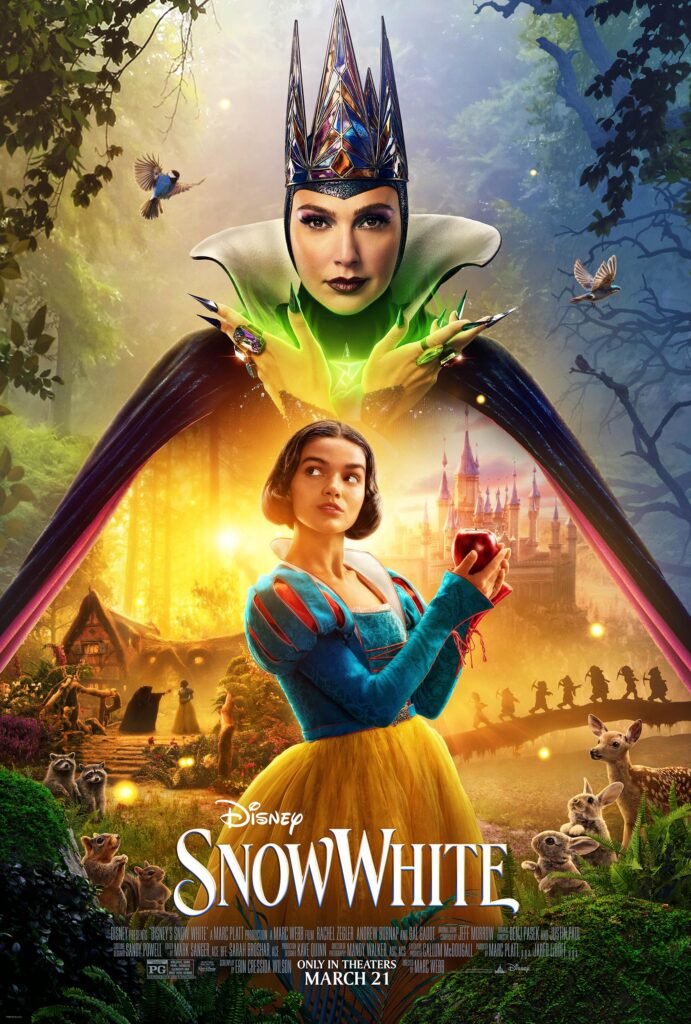
Still, some of Mandy Walker’s loveliest cinematographic work involves the recreations of frames from the original film. The huntsman’s looming shadow joins Snow White’s as he prepares to kill her in the woods. Snow White’s escape through the dark forest receives a nearly shot-for-shot reanimation, including the terrifying enchanted demon tree that lunges out from the darkness. And the iconic image of the dwarfs singing their work song as they cross over a log with Dopey (Andrew Barth Feldman) lagging behind gets a fitting tribute. The production design throughout, especially the striking symmetries outside the palace, is appropriately lavish.
As for Snow White herself, Zegler transforms the Disney film’s pseudo-cypher into a plucky, self-assured leader-in-waiting. She also sings terrifically, lending a redeeming gritty ache to the predictable pop melody of Waiting on a Wish, the princess’s early lament that she doesn’t yet have the guts to save her people.
Unsurprisingly, the classic damsel-in-distress hymn Someday My Prince Will Come hasn’t made the cut. Instead of a generic Prince Charming, Snow falls for Jonathan ( Andrew Burnap), not a prince at all but the leader of a group of politically motivated bandits who’ve turned to crime because they’re—no joke—out of-work actors unable to sustain careers in the arts because of the Evil Queen’s self-serving economic policies.
While Gadot is appropriately chic and menacing as the Evil Queen, she shades in very little besides general malice. It’s strange that there’s been no effort to make her more than a generic villain when everyone else is getting a glow-up. The camera often pans to Gadot at a diagonal from below, which does more to demonstrate the Evil Queen’s warped worldview than Gadot herself does.
But this Snow White, a fairly paint-by-numbers exercise in updating a classic property for modern consumption, is ultimately less interested in investigating the warring forces at play in this kingdom than gesturing broadly at them. The film seems to be political only to prove that it isn’t apolitical. But the poisoned apple and the chirping birds and the true love’s first kiss were never going to integrate into a civic drama.
A climactic scene of would-be revolution in which the townspeople sing a wordless chant, marching behind Snow White as she approaches the palace gates, comes across as, well, quite underwhelming.
4/10 I’m really not a fan of the Disney remakes.
Boluwatife Adesina is a media writer and the helmer of the Downtown Review page. He’s probably in a cinema near you.


